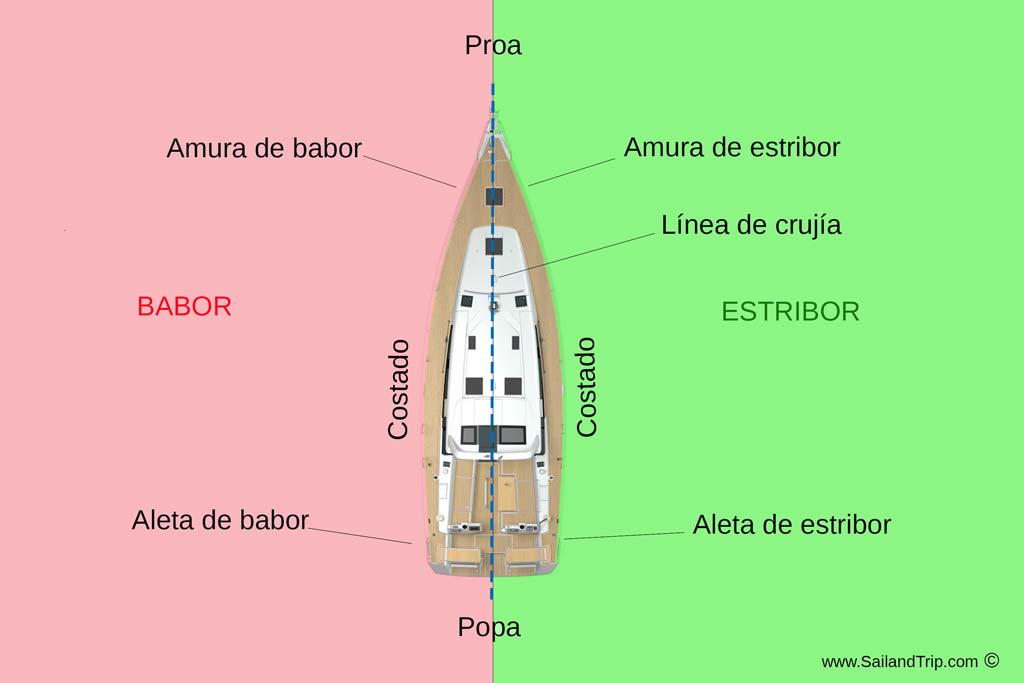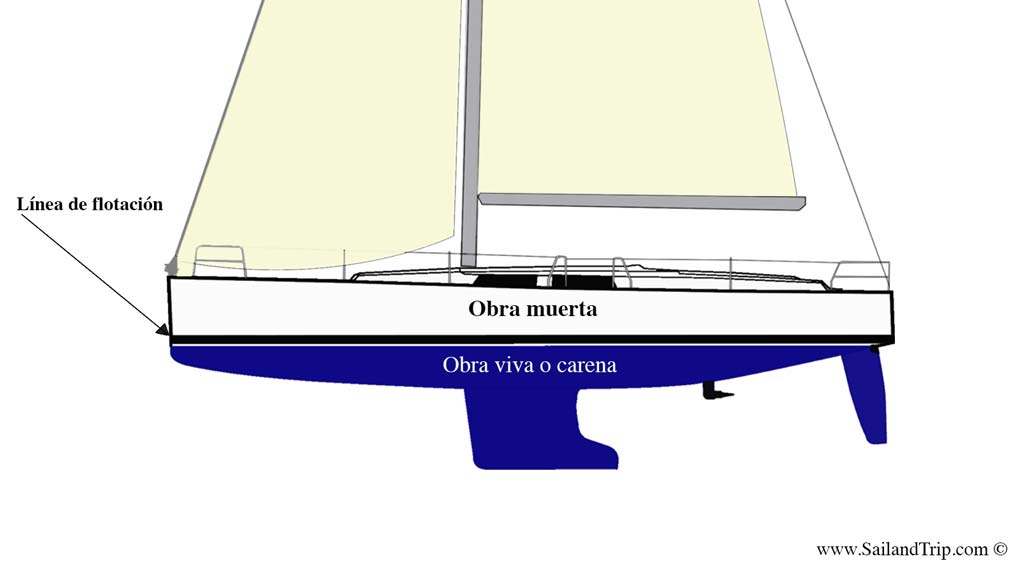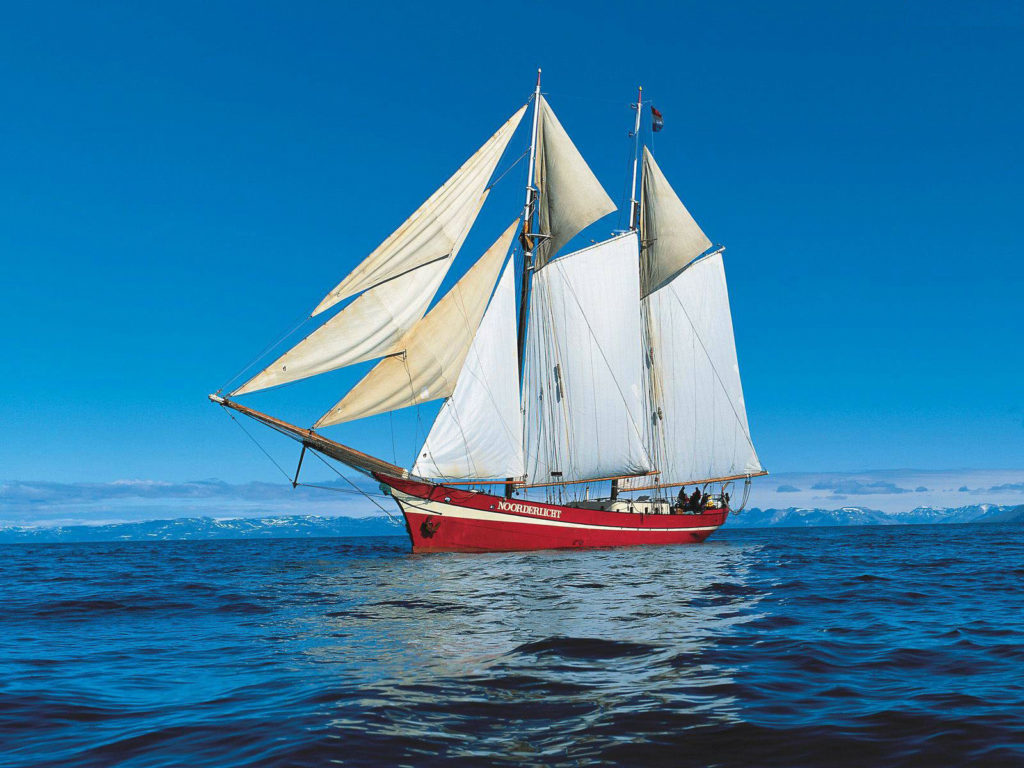BASIC REVIEW OF THE PARTS OF A FIBER BOAT

This post is also available in:
 Español
Español
The bow and stern, port and starboard, are possibly of the few parts of a ship that the general public knows (although it may confuse, especially the last ones). Whether it is a fiber boat or a large boat, each piece of a ship has its nomenclature, clear and difficult to confuse. The reason is simple: the deafening noise of navigation during a storm forces communication to be precise, because the ship and the life of its crew are at stake.
In the smaller fiber boat we will find parts such as woodland and rigging, length and keel, or codaste and wheel. With the help of V de Bravado, experts in carpentry and joinery for boats, we will discover these curious nautical terms.

Parts of a fiber boat
Here are the most important parts of a fiber boat:
Boat hull
Main frame of the ship and part that is submerged in the water. Usually, it can be made of wood, iron, steel, rubber, concrete, polyester, fiberglass or aluminum among other materials.
Bow
Front part of the boat, tuned to reduce hydrodynamic resistance to maximum movement.
Stern
Backside of the ship, and where the propellers that move the ship are located, if it is a clear engine.
Deck
Each of the surfaces that the ship has. And they can be made of wood or metal. In other words, every floor that a ship has is a deck. The highest upper deck of the ship is the main deck.
Keel
The most important element of the ship since it constitutes the spine or the skeleton. It is a longitudinal piece of wood or steel, which at the end of the bow joins the wheel and codaste in the stern.
Rudder
It’s like the steering wheel of the ship with which the boat is headed.
Propeller
The element that drives the boat and is moved with an engine, usually diesel.
Cabin
The space where crew members and passengers stay.
Starboard
Right side of the ship in the direction of its march. Or, in more technical terms, it is the right side facing the bow.
Larboard
Left side of the boat in the direction of its march. In more technical terms, it is the left side facing the bow.
Side stand
Each of the vertical sides that result from dividing the ship into a vertical longitudinal plane. A ship has two sides, the starboard side on the right side and the port side on the left side.
Through
Each side or side of the ship in the middle of the length.

Tack
The part of the side where the hull narrows forming the bow of the ship. There are two amuras, starboard and larboard.
Fin
The part of the side where the sleeve decreases to close and form the stern of the ship. There are two fins, starboard and port.
Boat Hull
Submerged part of the helmet.
Air Draught
Emerging part of the hull on the waterline to the ship’s side.
Length
The size of a ship from the bow to the stern.
Machine room
The room where the propulsion plant is housed, its boilers, compressors, lubrication pumps and ultimately, everything necessary for the operation of the ship.
Sail
Cloth that is used to push the boat thanks to the action of the wind.
Rigging
The rigging of the ship is the set of sticks, dicks, booms, hangers, tangons, etc. of a sailing ship. The rigging of the ships is not subject to fixed norms like those that each type of sailing ship had in the past.
Beam
The width of the ship.
Strut
The tall ship.
Stem
It is the one that forms the bow, and is at one end of the keel.

Sternpost
It forms the stern, and is located on the other side of the keel.
Anchor
Instrument used to fix a ship at a certain point in the sea.
Outboard
Engine that is located on the outside of the ship and is visible to the naked eye. These types of engines are carried by small boats such as small yachts.
Inboard
Engine that is located inside the boat. It can be carried by both small and large ships.
If you want to know more about boats or need some repairs for your fiber boat, do not hesitate to visit V de Bravado, experts in carpentry and joinery for boats and in repair of woodland and rigging.
